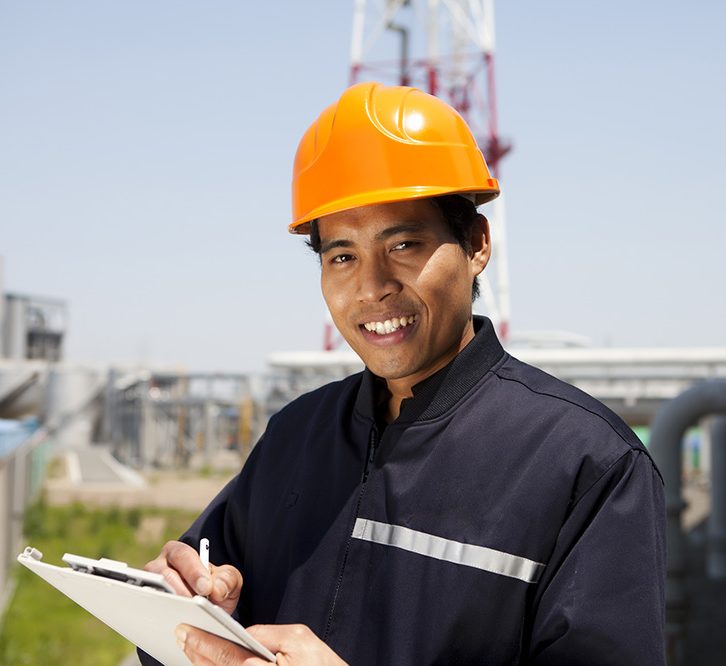
5 Important Gas Detection Tips
Gas Detection and Nitrogen Awareness
Gas accumulation in work environments is a major safety risk. Some gases are highly toxic to humans, while others can explode violently. Also, some gases have no color or smell, making them impossible to detect without instruments. For example, carbon monoxide is colorless and odorless, but lethal within minutes at a concentration of just 1%. Early gas detection is crucial to the safety of employees.
Even gases that are normally safe to breathe can become a hazard at high concentrations, including nitrogen. We breathe large amounts of nitrogen each day, since it represents 78% of the atmosphere, while oxygen only accounts for 21%. However, a higher nitrogen concentration means there is less oxygen to breathe, and it can cause suffocation. Oxygen itself can be a risk: the gas is vital under atmospheric conditions, but poisonous at high concentrations.
When an area contains dangerous gases or low oxygen levels, it is classified as a hazardous atmosphere. The potential risks caused by gases include suffocation, poisoning, tissue damage, fires, and explosions. Workers must be aware that a single gas can have several harmful effects. For example, natural gas can cause explosions, but it also causes suffocation when its concentration is high enough to displace oxygen. Suffocation should not be confused with poisoning, where a gas causes direct harm when inhaled, even when oxygen is at normal levels.
How Many Workplace Accidents Are Caused by Gases?
The US Bureau of Labor Statistics keeps track of all reported injuries, illnesses, and fatalities in the country. Gas-related accidents are not recorded individually, but there are two categories that cover hazardous substances. The latest available data is for 2018:
- Exposure to harmful substances and environments caused 40,130 nonfatal injuries and illnesses, and 621 fatalities.
- Fires and explosions caused nonfatal 1,480 injuries and illnesses, and 115 fatalities.
This article covers five best practices to protect workers from accidents caused by gases…
1) Utilizing the Correct Monitoring Device
When selecting air monitors, companies must ensure they cover all the hazardous gases present. For example, you need separate detection methods for carbon monoxide and radon. There are also situations where it is acceptable to measure several gases together. For example, many volatile organic compounds (VOC) have negative health effects, but there are thousands of types. Unless the concentration of a specific VOC is required, companies can track their total content in the air. The requirements of an air quality monitor also depend on the point of use. For example, some environments require a dustproof and waterproof housing. In areas where flammable substances are present, an explosion-proof enclosure is mandatory.
2) Warning and Rescue System

The effects of gas exposure may include loss of consciousness, and a quick rescue is critical if a worker is affected. Air monitoring should be combined with a warning and rescue system, which has two important functions:
- Activating alarms, so workers can evacuate before a dangerous gas affects them.
- Helping rescue any workers who are unconscious or trapped.
To improve the effectiveness of a warning and rescue system, companies should provide adequate training and conduct regular drills. When an actual emergency occurs, the staff will know exactly how to respond.
3) Adequate Training
Air monitoring equipment is only useful when operated correctly, and when its measurements are clearly understood. A company can purchase the most accurate air monitor in the market, but it will have no use in the wrong applications. Other than knowing how to measure gas concentrations, workers must be aware of the specific threats in each hazardous atmosphere. Accident prevention is more effective when everyone is aware of the gases that may be found, and the symptoms they cause. Safety training programs must cover gas detection and nitrogen awarenesssince gas has many industrial applications. As mentioned above, nitrogen is not a threat at the 78% volume found in the atmosphere. However, when pure nitrogen is used to displace a toxic or flammable gas, it reduces oxygen levels and creates a suffocation risk.
4) Hazardous Atmospheres and Air Testing
Many hazardous gases cannot be detected by human senses, as previously mentioned. Even when gas is visible or detectable by smell, there is no way to tell its concentration without air testing. Using the senses to detect harmful gases also involves direct exposure, which is precisely what safety managers want to avoid. Completely removing all harmful gases from indoor air is not viable, especially in industries that use plenty of chemicals. A smarter approach is setting concentration limits for key air pollutants, such as the National Ambient Air Quality Standards (NAAQS) from the US EPA. Companies can compare their air monitoring results with these standards, to determine if a specific gas has reached hazardous levels. Many air testing methods are chemical, and gases are measured based on how they react. However, this also means that multiple methods are required to detect several gases.
5) Continuous Atomosphere Monitoring
Testing the air a single time is not very useful when site conditions are constantly changing. This is especially true for gases with severe effects in minutes, such as carbon monoxide. There are also cases in which a dangerous gas accumulates slowly, and a single measurement may miss the threat. Some gases have little or no effect with brief exposure, but severe medical consequences after years. For example, long-term exposure to radon and many VOCs has been linked with lung cancer. In these cases, continuous air monitoring can protect workers. Another promising application of air monitors is automating ventilation systems. Indoor areas can be purged automatically when dangerous gases reach a specified value, and this prevents higher concentrations.
Hazardous gases are among the risks present in workplaces, and their effects include suffocation, poisoning, fires, and explosions. These gases are associated with industrial settings, but residential and commercial buildings are also exposed. Since many air pollutants are undetectable with human senses, only a monitoring system can offer reliable protection. Adequate training is key to prevent gas-related accidents. When workers are aware of the gases that may be found and how to measure them, risk management becomes simpler and more effective. Following these safety practices for gas detection will help protect workers, create a safe work environment, and minimize accidents.




























